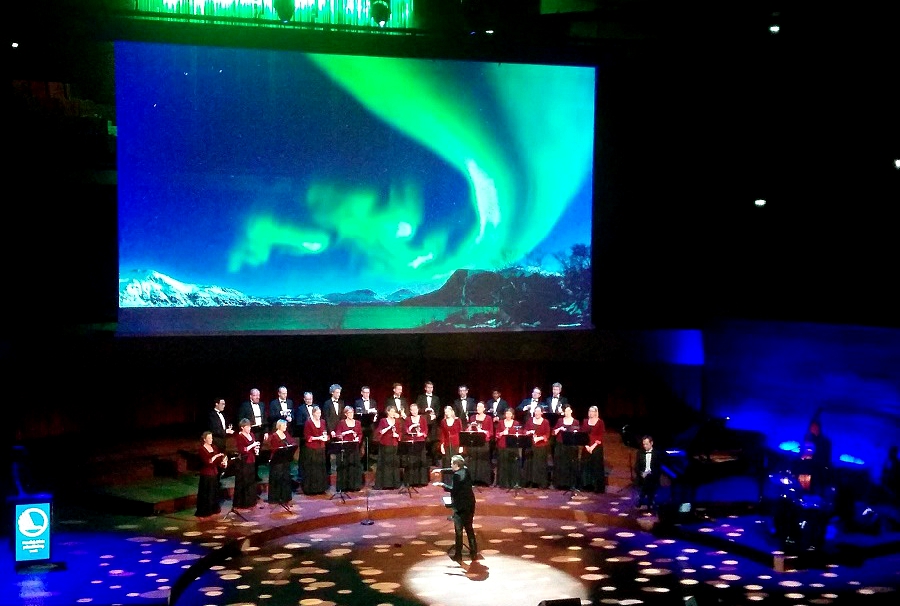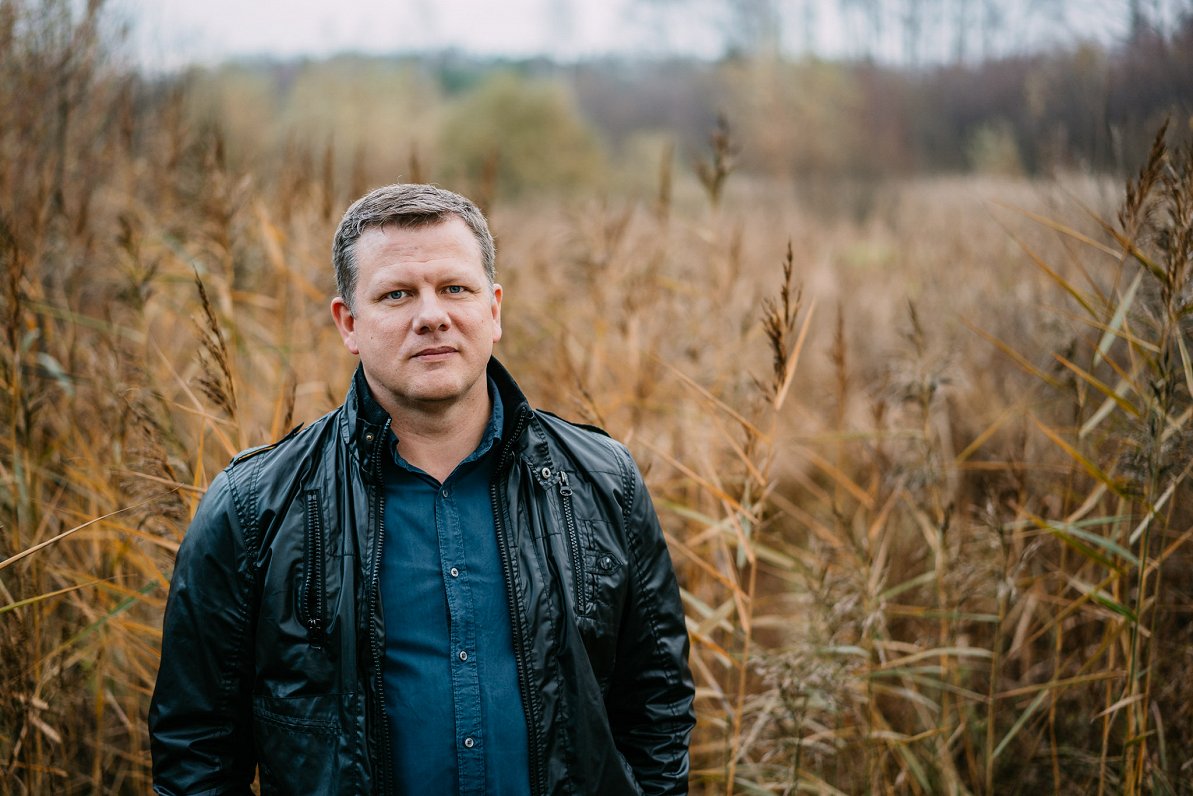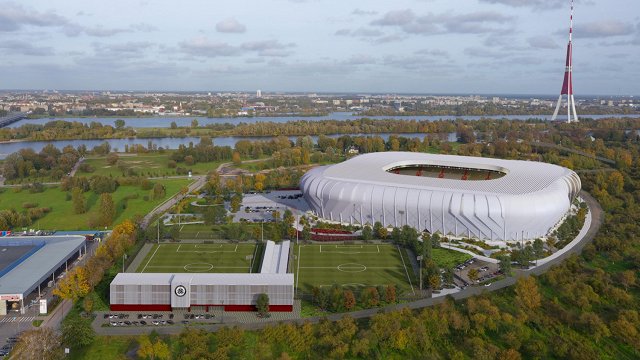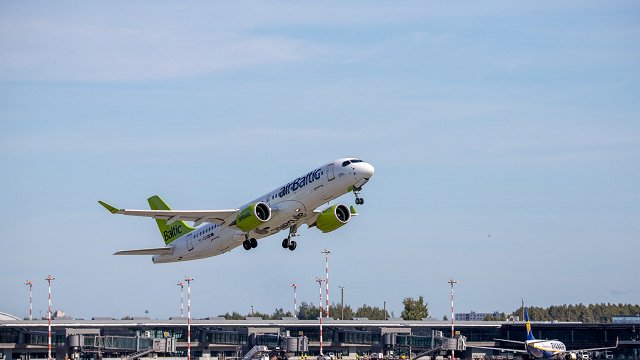Following his first encounter of the aurora borealis, Ēriks has been visiting the Nordics every year, as the energy he channels from the aurora borealis inspires him to create more work. The Nordic-Baltic Mobility Programme for Culture has helped the composer achieve his goals.
“On many a night did we see the northern lights battling in the North,” says a Latvian folksong, referring to beliefs according to which the aurora borealis are the souls of fallen soldiers fighting in the sky. These lyrics, used in Ēriks Ešenvalds’ Northern Lights, are sung across the globe, from South Africa to New Zealand and from Chile to China. Ešenvalds has been utterly spellbound by the northern lights, and for a decade now he has been trying to find time to visit Norway’s Tromsø every year. It was there that he first saw the polar lights, and this spectacular beauty inspired him to compose the Northern Lights multimedia symphony.
It started almost by accident. A Dutch producer listened to Ešenvalds' False Suns and suggested he write another choral song about atmospheric events. “False moons? A rainbow? I pondered what I should choose. I chose the northern lights, as I had not seen them before but I wanted to very much,” says the composer in describing the inspiration for his grand work.
He didn’t have any luck on his first visit to Tromsø, northern Norway. He was unable to see the aurora from the city parks, despite the fact that weather centers had forecast a very strong geomagnetic storm. He visited again after a couple of months. He was more lucky this time around. “I found out that you have to leave the city to see the northern lights. I drove deeper into the mainland and took a dirt road where there was not a soul to see. It was all perfectly still and dark,” Ešenvalds says, recounting his first experience of the polar lights a decade ago. “I saw something extraordinary. A white curtain fell over everything. And the bottom part of its outline was sort of cursive and running. It lasted just a quarter of an hour, but I understood at once that this was something beautiful!” Ešenvalds says. The way he puts it is that he had a private audience with the northern lights. A perfect stillness, some snow, a temperature of minus two degrees Celsius, and the aurora as the sole source of light.
Subconscious composition
“I felt it. At that moment you don’t hear any E, F or C sharp. Nothing. Instead, you feel the tempo and the ambient atmosphere of the northern lights. You grasp the feeling, and it starts doing its work in your subconscious while you are sleeping,” Ešenvalds says, in describing this extraordinary burst of inspiration. “These new impulses slowly amass themselves and at some point you have all the info you need and your vision becomes clear. At that point you can simply go on drawing from this vessel of impressions. When I actually start composing, however, I have to be at home by the piano.”
It was clear to him that a ten-minute work wouldn’t do justice to what he had witnessed. He had to write a multimedia work in which music became intertwined with folklore and cultural history. The composer set to work with an immense reach and vigor. His first visits were supported through a grant by the Nordic-Baltic Mobility Programme for Culture. However, Ešenvalds was only provided funding on his third request. “I was rejected once, and then again on the second attempt. I couldn’t understand why. I thought, what am I doing wrong? I fitted all the criteria.” But his perseverance paid off, and after the third attempt he was able to embark on this huge work of research.

There were many ups and downs early on. Professors at different universities he had contacted were not replying. But the University of Tromsø, with its leading northern lights researchers Asgeir Brekke and Ola Graff, proved to be responsive. Ešenvalds went on to slowly find folklore specialists prepared to don folk costumes and sing a song or tell a folk belief or legend about the aurora borealis in front of the camera.
“The reality is such that we very much cultivate our unique folk heritage in Latvia, Lithuania and Estonia. The oral tradition is still alive here. We have people who can sing [folk songs]. I had the feeling that I was a polar explorer who had arrived in Nordic villages and towns much too late,” Ešenvalds says, recalling some disappointments he had to experience over the expedition. An old lady in Greenland, for example, sang a song in an Inuit language. “The song went, Northern lights, northern lights... but it was to the tune of ‘Jingle Bells’!”
Ēriks quickly understood that personal contacts were of the greatest importance in looking for storytellers and that the “common people” were the most responsive. Pointers by folklorist Zane Šmite led him to an expert on Sami folklore, and in a stroke of luck he learned, in conversation with Irene Skogli, the wife of the photographer Kjetil Skogli involved in the project, that she had a folk costume at home and knew a legend about the northern lights.
Patriotic joy
Following expeditions to Lapland, Iceland, Greenland and Alaska, it took four years to finish Northern Lights, which was first performed by the Latvian State Academic Choir in 2015. The choral work Northern Lights is among Ešenvalds’ most popular works, and it features lyrics from a Latvian folk song. It is particularly touching that conductors and soloists are writing to the composer, asking him for pointers about pronouncing the Latvian for “On many a night did we see the northern lights battling in the North” as perfectly as possible. Ešenvalds points these fastidious singers to the renditions by the Latvian State Academic Choir or the Youth Choir Kamēr… “It sparks patriotic joy within me. I am even surprised at some of the choirs that have learned to sing perfectly, without an accent.”
The northern lights symphony has set the creative bar very high for the composer. He would like to create another multimedia work, but it must be up to par with the work he’s done earlier. “I want to touch waters, oceanic streams that change directions and the lands that are subordinated to these streams. There are folk stories about all of that. I would also like to compose pieces about the winds, too.”
Ešenvalds suggests Tromsø as a good destination for observing the polar lights. First of all, it’s not far off. You can go to Tromsø from Rīga within five hours with good connecting flights. Secondly, the cold is never bitter there, which makes watching the northern lights a pleasant experience, as opposed to a demanding adventure in minus thirty degrees Celsius, as can be the case in the central regions of Finland, to name an example.
He last visited Tromsø in March 2020, managing to do it just before borders started closing due to the pandemic. “The Norwegians take great care and are very accommodating so as not to have any technical obstacles preventing creative people from going there to find inspiration. And the spectacle of the northern lights is for free.” You can observe the aurora borealis from a different angle on a plane to the United States. Ešenvalds always picks the seat on the northern wing, and he has had the opportunity to see the polar lights from above on almost every flight he’s had.
Published courtesy of the Nordic Council of Ministers Office in Latvia (Norden).



























